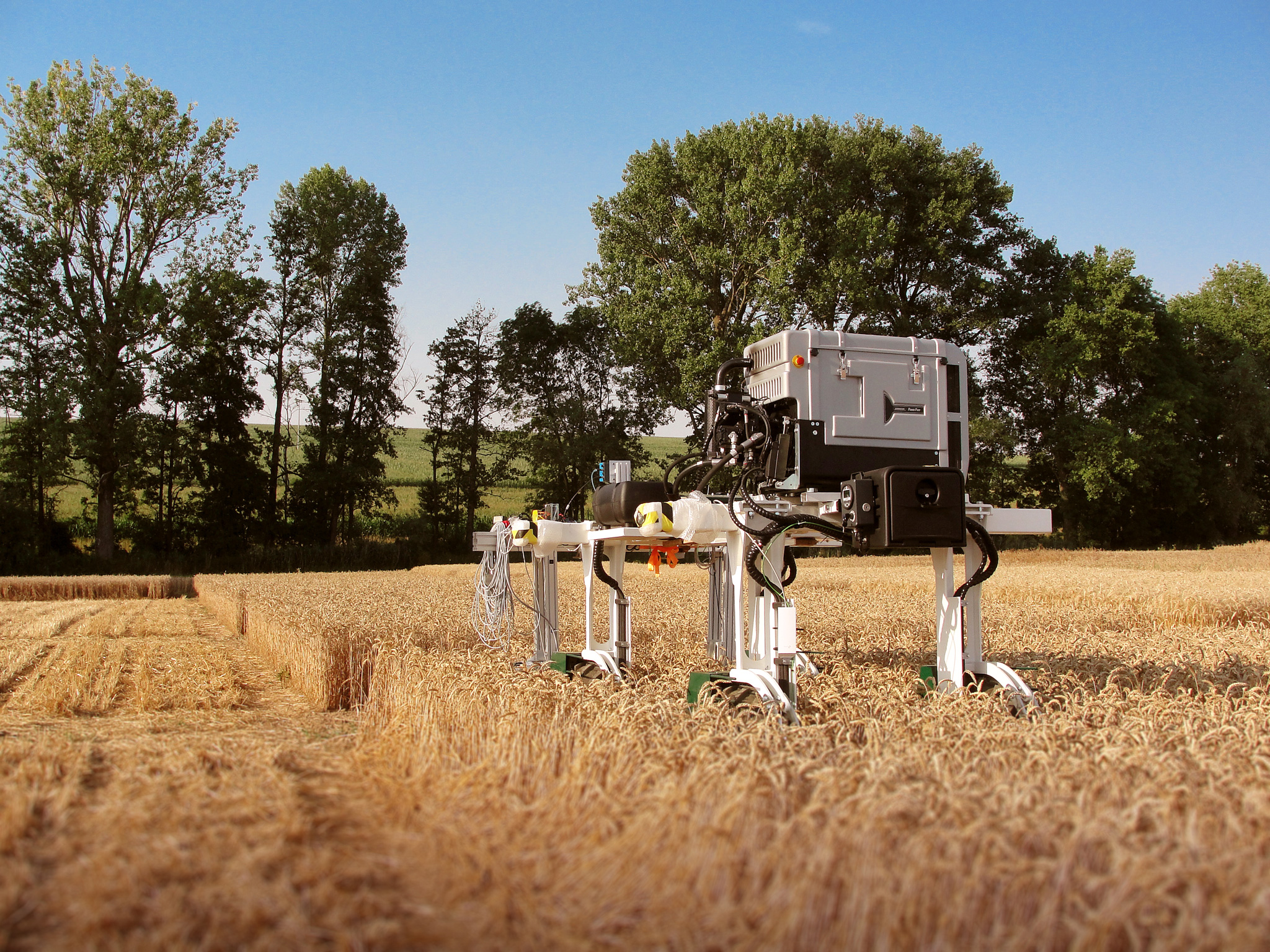Global warming and rising demand for food, coupled with global population growth, are among the key challenges of the 21st century. In this context, the ability to breed new, adapted varieties of food crops is a crucial asset. The budding research field of digital phenotyping is devoted to non-destructive trait detection to enable selective breeding of food crops.
At a leisurely pace, the field robot makes its way back and forth across the densely planted wheat field. To a casual observer, the machine’s outlandish appearance might seem more suited to the exploration of distant planets. The contraption, designed to cause as little damage as possible to the delicate crops as it traverses the field, is equipped with a collection of sensors that literally watch the plants in the field grow.
With prototypes like this one, researchers at Fraunhofer IIS and industry partners such as the companies PhenoKey, Strube, and Saatzucht Streng & Engelen, have taken an important step forward in the field of phenotyping research: »This approach enables us to closely observe plant growth in its natural environment, providing us with objective and undistorted data,« says Dr. Stefan Gerth, head of the »Innovative System Design« group at the Fraunhofer Development Center X-Ray Technology EZRT.
